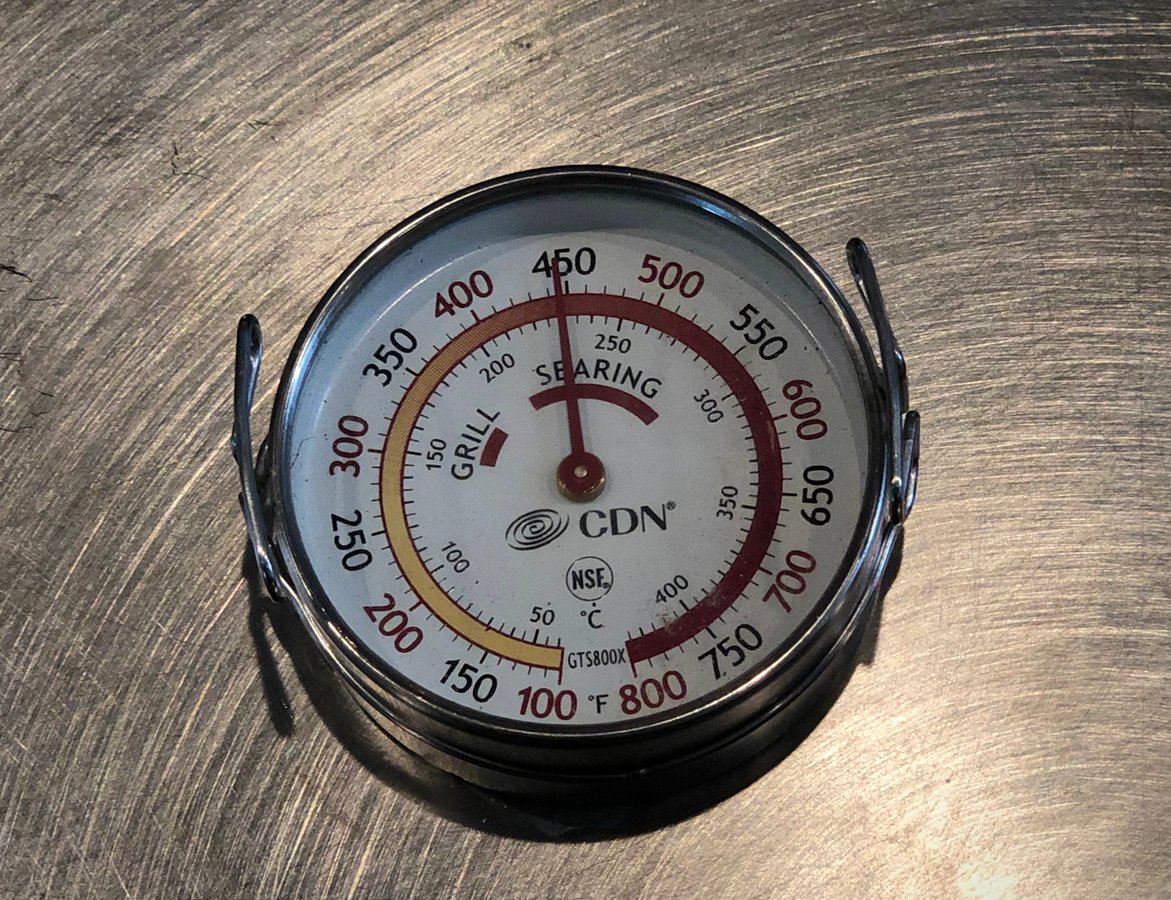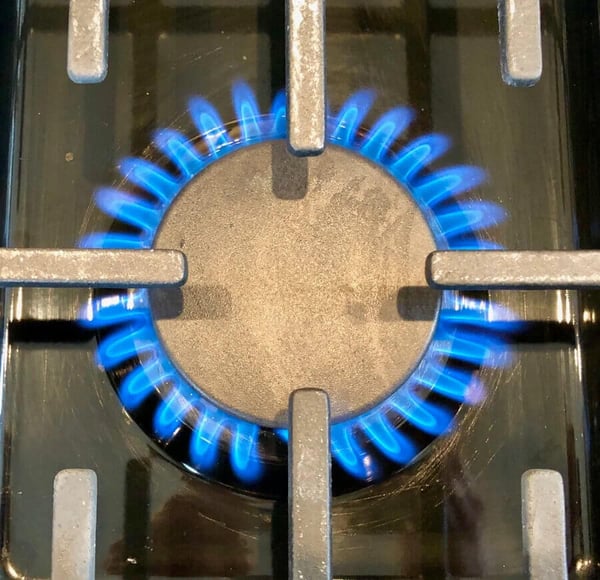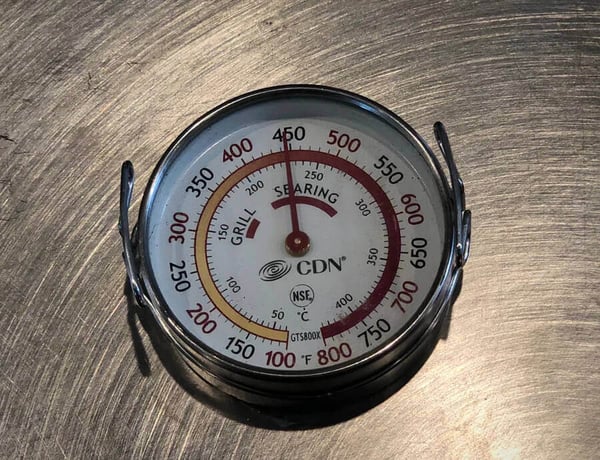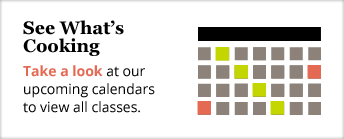How to Properly Heat your Pan so Food Won't Stick

Let me tell you a story that may sound familiar. There was once a man who cooked a boneless skinless chicken breast. He put his skillet on the stove and turned the heat on. He added some oil and then the chicken and hoped for the best.
After some time, steam started to rise and the chicken seemed to be boiling a little bit in its own juices. He had not intended to boil his chicken; he had intended to brown it beautifully in some olive oil and spices. After more time, the man tried to turn the chicken breast over, but it stuck, so he quickly put it back. It wasn’t brown anyway, maybe it would release itself in time? After all the boiling stopped, the man tried again to turn the chicken, which he was only able to do with some scraping. Now it seemed that the part of the chicken that stuck to the pan was brown but the rest of the chicken was pale and not very appetizing. He turned the chicken anyway. He cooked the chicken about the same amount of time on the second side. When the chicken was a little bit brown on the second side, the man felt the chicken was done. Perhaps the chicken was more than done, because you see, by the time the chicken had browned, all the juice had left the chicken. The man was happy to eat something and was getting used to eating dry chicken now.
I am familiar with this story not just because it has happened to my students, but because it's also happened to me and everyone who has ever been impatient and just wanted that chicken done now! I can tell you exactly how to stop this from happening again - not the impatient part, sorry I can’t help with that. But I can tell you definitively how to preheat your skillet properly.

The simple act of preheating your skillet properly will stop your food from sticking the majority of the time. When a pan is properly preheated, the moisture in the food wicks away from the surface of the pan, and the fat that you add to the pan makes a slip and slide for your food on top of that hot pan. A lukewarm pan will draw the moisture to the pan and the moisture makes the food stick. In this case, fat is better than water for your slip and slide. There are certain foods that are more delicate and likely to stick, like a lightly breaded crab cake, crepes, an omelet or a duck breast. These dishes can benefit from a non-stick pan, but you really don’t ever have to use a non-stick pan, they are more of an insurance card.
Learning how to properly preheat your pan is the first step in learning how to cook and yet most people don’t know how to do it.
- Wouldn’t that be the first step for then mastering how long to cook that steak?
- Then figuring out what pan to use?
- What size of pan to select?
- Then to understand whether to cover the pan or leave uncovered?
In this blog, I am going to show you how to preheat your pan with 100% accuracy. The rest of these subjects will be addressed in our first ever Cookware Kraze events on Sunday, January 19 at Lincoln Square and Friday, January 31 at the Merchandise Mart. At these inaugural cookware days, our chefs will perform cooking demonstrations with a focus on cookware: the right pan for the job, how to size your cookware appropriately, how to heat it, clean it, care for it and if you like, buy it at a 20% discount.
I find that our students really appreciate when I can give them a definitive answer to a problem. I’m not going to tell you to hold your hand over the pan or throw water in it or add oil and look at it. Not that those are terrible ideas of how to tell when a pan is hot - it's just that they are subjective. An oven isn’t subjective: turn it on to 350, it beeps when it is hot, I put my cookies in, bam that was easy. So why not do the same thing with your pan? If you want to know exactly how hot your pan is, then take its temperature using a surface thermometer. Make your pan like your oven - consistent (I realize that might be an overstatement depending on your oven).

Surface thermometers aren’t super expensive and are relatively simple to use. Whether using a surface thermometer or not, you still need to heat your pan thoroughly before you add anything to it. Do not add oil, butter, meat or anything until that pan is properly heated. That should take a good 5 to 8 minutes. Yes, I said 5 to 8 minutes. You have to give that pan time to heat and it takes a little time and practice for you to regulate the temperature to the proper place. With experience you can do this quicker, once you know your stove and your cookware and how they react with each other you will build confidence and skill.
Here are my suggested temperatures for your cooking surface. Feel free to disagree, lower them or increase them. You may prefer cooking on a higher temperature than I do, it really doesn’t matter, what matters is that you achieve consistency in your cooking. Once you have determined what your preferred high heat is on your stove and you have properly preheated your pan, you are that much closer to knowing how long to cook your steak.
425-450 High Heat: For Searing, Sautéing and Boiling
- You might more accurately call 425 degrees medium-high, which I use a lot.
- You might more accurately call 450 degrees high, but you can cook higher and 500 might be more your zone.
- There are not many circumstances the average person needs to cook on a higher temperature than 450 degrees except wok cooking.
350-375 Medium: For Sauces, Soups, Low Boil
300-325 Low: For Simmering, Poaching
To preheat your pan with a surface thermometer, set the thermometer in the center of the pan and turn it on. I always suggest starting lower than you think you need and increasing or decreasing to achieve a steady temperature. Pro tip: I use long tongs to pick up the thermometer and move it around.
Once you have reached the desired temperature that pan will sit there and wait like a good little child until you are ready to cook something. When you are ready to cook, add your fat to the pan and immediately add the food, there is no need to heat the oil. In fact, when using high heat do not heat the oil, just remove that idea from your thought process. You need to be fast about it at high temperature: add the fat, turn around, grab that steak and put it in the pan. You may need to swirl the fat around to coat the pan but that’s it. When your pan is really heated to a high temperature the fat will burn quickly, so again, do not worry about heating it.
Going back to the story from the beginning of this post, I want to show you the proper way to cook a boneless skinless chicken breast in a pan with these videos.
I hate to give you a solution that makes you have to purchase something, but I think the accuracy achieved will be well worth the investment. Stop by the stores anytime to see our line of thermometers and of course, we would love to see you at our upcoming cookware events and receive 20% off your cookware purchases. Mention this blog and receive 20% off your surface thermometer, too!

